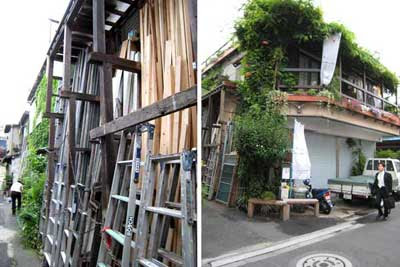
'These Tokyo back-streets contain low rise buildings, very much informal and slummy-looking, with extremely narrow and labyrinthine streets, self-made looking houses, often with parts added-on, and made of material such as metal sheets and wood. Moreover most neighborhoods are very much mixed-use.'

'The houses need constant care and upgrading.'

'Typical low rent flats in Tokyo get very cold in the winter and very hot in the summer.'

'This is a "sento": a public bath. Apparently, some apartments still don't have a shower!'
'We can clearly see the past of Tokyo as a slum. How much of a good thing it was that these slummy areas were not master planned and “redeveloped” but rather left to develop on their own and retrofitted with modern infrastructure. Tokyo is a model of development for developing cities which are so often ashamed of their slums and dream of vertical modernity. Slum is vernacular architecture. This is history and culture. Don’t destroy it, develop it!’
Source: The original photos and essay by Matias Echanove can seen at airoots.organic. His report, “The Tokyo Model of Urban Development”, is also very interesting.
I commented on his post:
One thing about planners is that they plan too much. They believe that the opposite of planning is chaos. In fact, there is much in nature that suggests that things “self-organize” and “self-assemble”. Oh yes, we have to plan, but people should be allowed as much as possible to make individual decisions for themselves. When they do, the result is not necessarily ugliness and disorder.
For his response see CoComments on the side panel.
1 comment:
This is a wonderful blog! Fascinating topic! Here in Panama our housing ministers were of much the same opinion in regards to 100 year old housing for the poor which was mostly "board building." Our new minister of housing, however, feels that her mission is to preserve whatever is preservable in these "ghetto" type areas and simply restore the old board buildings. Provide new facilities for the people (water, electric, sanitation, safe entries) and move the people back in to enjoy a dignified life for low cost. I will soon be taking up this topic (housing in Panama's history) in my future posts. http://thesilverpeoplechronicle.blogspot.com
Post a Comment